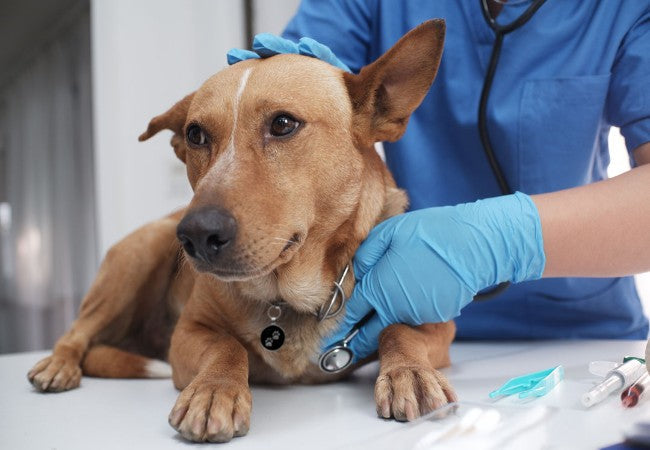Comprehensive Canine Atherosclerosis Guide for 2025: A Veterinarian's Breakdown 🩺🐾

In this article
Comprehensive Canine Atherosclerosis Guide for 2025 🩺🐶
By Dr. Duncan Houston BVSc
Welcome! I’m Dr Duncan Houston, BVSc, your trusted veterinarian and founder of Ask A Vet. This in-depth, medically reviewed guide dives into canine atherosclerosis, offering clarity and actionable care tips for pet parents in 2025. Let’s explore symptoms, diagnostics, treatment, lifestyle, and cutting-edge imaging, designed for senior dogs and breeds at risk.
🐾 What Is Canine Atherosclerosis?
Atherosclerosis occurs when lipids, cholesterol, and calcium accumulate inside arteries, forming plaques that stiffen and narrow blood flow conduits. Over time, this can impair blood flow, rupture plaques, or create clots that lead to serious complications—even a heart attack.
Though rare in dogs, certain breeds—Doberman Pinschers, Miniature Schnauzers, Poodles, Labs, Beagles, Dachshunds—show higher incidence. Risk increases after age nine, especially in males, and in dogs with diabetes or high cholesterol.
🔍 Signs & Symptoms to Spot Early
- Lethargy, poor appetite, weight loss
- Exercise intolerance, difficulty walking, pelvic limb weakness
- Respiratory issues (heavy breathing, fainting)
- Neurological signs: disorientation, circling, blindness, seizures
- Digestive upset: diarrhea, vomiting
- Cardiac events: chest pain or heart attack–type collapse
📅 Why 2025 Matters for Diagnosis & Imaging
Traditional methods—blood tests, ECG, X-rays, echocardiograms—remain crucial. But in 2025, we see growing interest in advanced imaging with PET scans (FDG, NaF tracers) to identify inflammation and microcalcifications before structural changes manifest.
🧪 Diagnosis Workflow
- Signalment & History: Age, breed, prior conditions (e.g., diabetes).
- Physical Exam: Auscultation, pulse strength, limb assessment.
- Laboratory Tests: CBC, chemistry (cholesterol, liver, kidney), urinalysis, cardiac biomarkers (troponin, NT-proBNP).
-
Imaging:
- X-rays: heart size, fluid
- Echocardiograph: structure, plaque?
- ECG/Holter: arrhythmias, conduction blocks
- [Optional in referral centers] PET–CT: visualizes active plaque inflammation & calcification.
⚕️ Treatment & Management Strategies in 2025
There’s no cure, but early, tailored treatment can slow disease progression and improve quality of life.
💊 Medications
- Lipid-lowering agents: Statins or fibrates—off-label but commonly used.
- Antihypertensives: ACE inhibitors, pimobendan, and sildenafil to manage blood pressure and cardiac output.
- Diuretics: Manage fluid retention in case of heart failure.
- Anticoagulants/antithrombotics: To reduce plaque rupture risk & clotting.
- Diabetes control meds: For diabetic dogs, critical to slow plaque buildup.
- Anti-inflammatories: Considering inflammation's key role.
🏃 Lifelong Lifestyle Adjustments
- Low-fat/low-cholesterol diet: Veterinary prescription foods or functional nutrition plans.
- Regular exercise: Tailored to the dog’s stamina—easy walks, swimming, play to support circulation.
- Weight and stress management: Obesity worsens progression.
- Frequent follow-ups: Monitor labs, imaging, blood pressure every 3–6 months.
🔬 Advanced Imaging & Referral
Referral centers may offer PET–CT scans with FDG or NaF tracers. FDG identifies vascular inflammation; NaF detects microcalcifications, helping gauge plaque activity and rupture risk.
While not yet routine, these modalities are becoming accessible in university clinics, ideal for complex or atypical cases.
🐕 Breed-Specific Insights
| Breed | Risk Factors & Considerations | Care Tips |
|---|---|---|
| Doberman Pinscher | High risk after 9 yrs—diabetes or heart disease increases risk | Annual cardiac panels, weight, and glucose checks |
| Miniature Schnauzer | Often hyperlipidemia/genetic predisposition | Low-fat diet, routine blood lipid screening |
| Poodle (All sizes) | Cholesterol sensitivity, obesity tendency | Caloric control, regular bloodwork |
| Beagle | Common hyperlipidemia, age-risk by 10 yrs+ | Exercise routines, a balanced diet |
| Dachshund | Early coronary atherosclerosis reported—even as young as 2 yrs | Holter monitoring, ECG with weakness episodes |
🧬 Cutting-Edge & Future Directions
- Biomarkers: Troponin-I and NT-proBNP help track cardiac stress & outcomes.
- AI ECG analysis: Machine learning tools, like PulseNet, may soon assist in routine ECG interpretation in general practice.
- Vet-specific PET tracers: Future research may bring canine-specific targeting agents for precision imaging.
- Rapamycin trials: Though focused on feline cardiomyopathy, longevity studies in dogs using sirolimus (rapamycin) may inform vascular benefits over time.
📅 Regular Vet Check Plan
Initial diagnosis: baseline tests—CBC, chemistry, ECG, echo, lipid panel.
Every 3–6 months: follow-up labs, physical exams, BP check.
Yearly or as-needed: advanced imaging, Holter monitoring, and PET referral.
Daily at home: monitor appetite, activity, gait, breathing, and cognitive cues.
✍️ Owner Tips & Pitfalls
- Be proactive—don’t wait for severe signs.
- Stick to vet-guided diet & med schedule.
- Log changes in behavior, breathing, and mobility.
- Avoid high-fat treats; share functional enrichment (e.g., puzzles).
- Discuss pet insurance—treatment can cost $500–$10,000+, depending on medications/imaging.
❤️ How Ask A Vet Can Help
At Ask A Vet, we offer telemedicine for remote monitoring, nutrition consults, and help navigating complex referrals. Our team partners with experts to coordinate advanced diagnostics and manage long-term care. Download our app for tracking, reminders, and on-demand support tailored to your pup’s 2025 care journey!
🔚 Summary
Although rare in dogs, atherosclerosis is serious—especially in senior, large-, or predisposed-breed dogs. With early detection, careful lifestyle adjustments, regular monitoring, and in homes with high-risk pups, referral-based imaging, prognosis can improve markedly.
Early signs—lethargy, gait changes, neurologic episodes—should trigger a vet visit. Tests like echocardiogram, ECG, lipid panels, and biomarkers help guide treatment. 2025 brings exciting imaging and AI advancements, though routine care still thrives on classic veterinary medicine.
With dedication, compassion, and tools like Ask A Vet, we can help our furry companions live full, comfortable lives even with vascular disease.
— Dr Duncan Houston, BVSc






